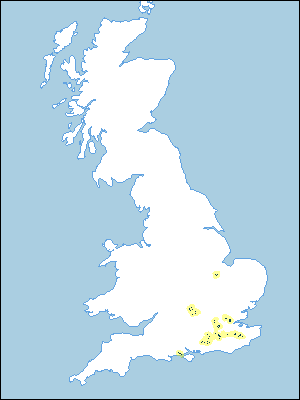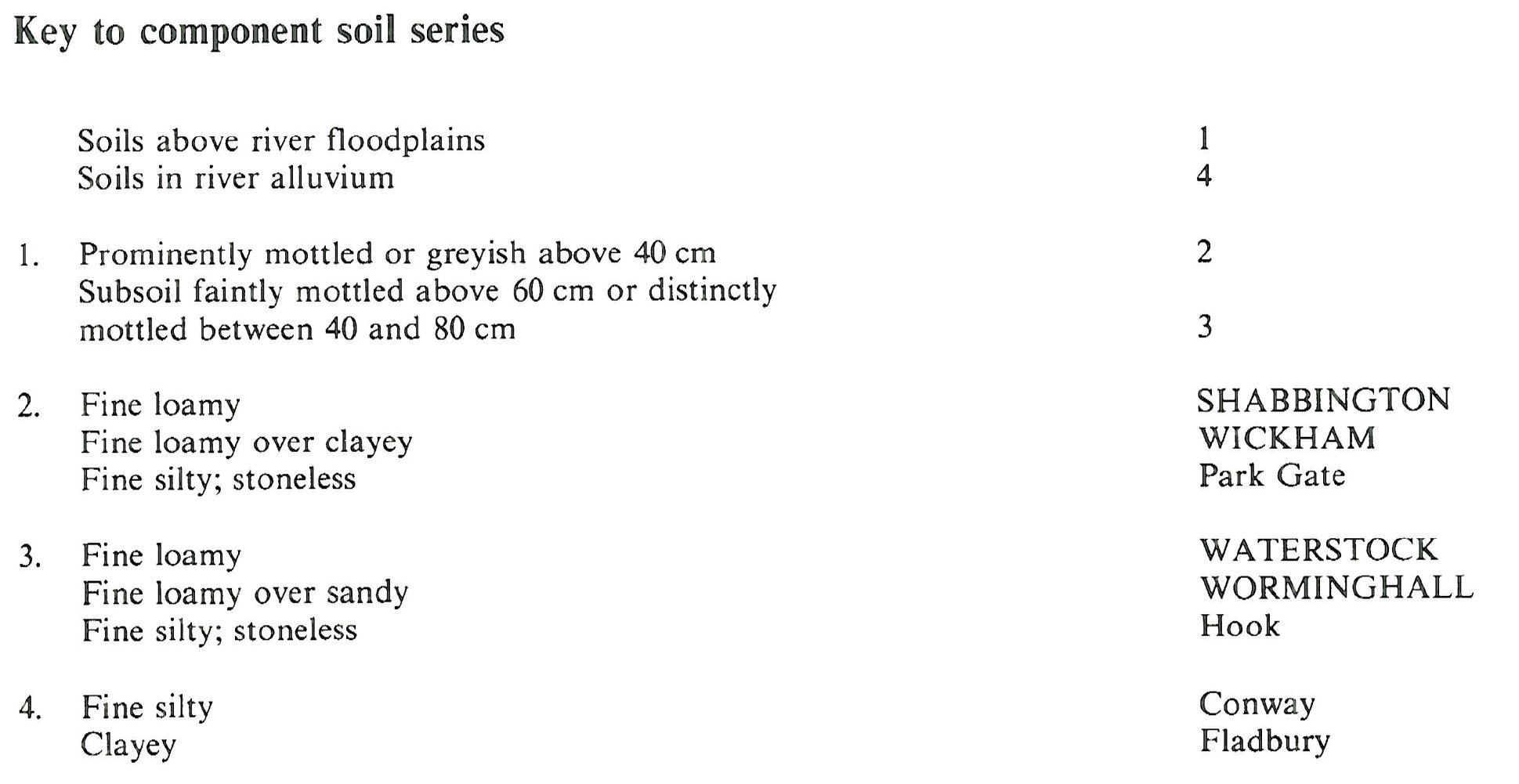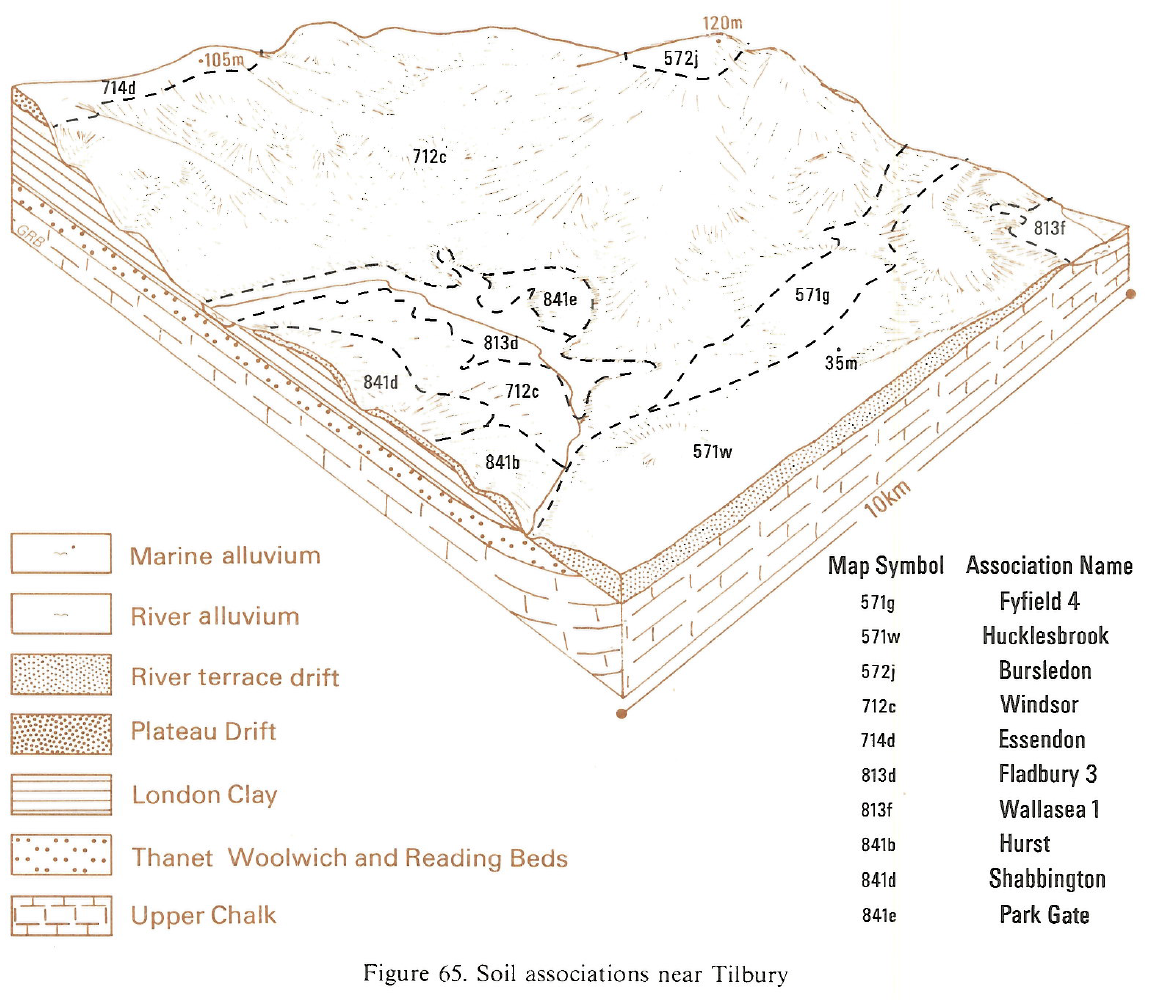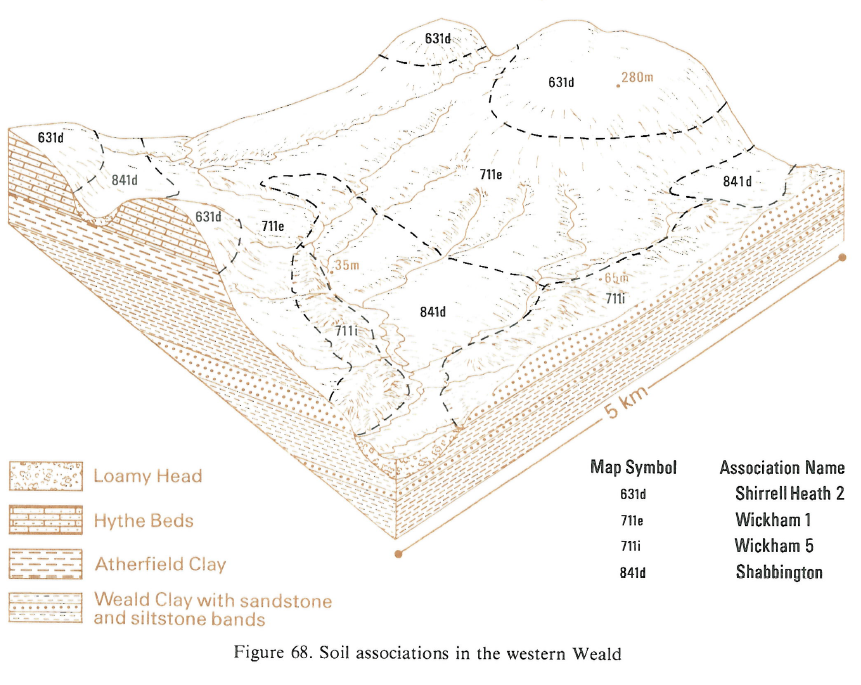
Soil Associations
0841d SHABBINGTON
Soil and site characteristics
Deep fine Loamy and fine loamy over sandy soils variably affected by groundwater. Some slowly permeable seasonally waterlogged fine loamy over clayey soils.
Geology
River terrace drift
Cropping and Land Use
Winter cereals and short term grassland; some permanent grassland.
Component soil series
| Subgroup | Series name | Percentage | WRB 2006 link |
|---|---|---|---|
| 8.41 | SHABBINGTON | 35% | Luvic Gleysols |
| 5.73 | WATERSTOCK | 20% | Endogleyic Luvisols |
| 5.73 | WORMINGHALL | 10% | Endogleyic Luvisols |
| 7.11 | WICKHAM | 10% | Eutric Luvic Planosols |
Covers 392 km2 in England and Wales
Soilscapes Classification
| 22 |
Loamy soils with naturally high groundwater |
0841d SHABBINGTON
Detailed Description
This association occurs north and east of Oxford in the valleys of the Thame and the Cherwell, on the Bedford Level north-east of Peterborough, in south Essex, the Weald of Kent, Sussex and Surrey, and in south Hampshire. It is found on river terrace deposits and Head which are commonly adjacent to, or just above, river floodplains; these deposits are usually underlain at depth by clayey formations. The soils are developed in fine loamy drifts which vary in stoniness and commonly rest on bedded sandy or gravelly material. Shabbington soils are typical argillic gleys usually mottled grey and brown immediately below the topsoil, and Waterstock soils are gleyic argillic brown earths with mottling in the subsoil. Worminghall soils are similar to Waterstock soils but have sandy subsoils. Wickham soils, fine loamy over clayey typical stagnogleys with grey and brown mottling immediately below the topsoil, are found where the drift is thin over clay.
The association is found on level or gently sloping land between 1 and 15 m O.D., north-east of Peterborough. Shabbington and Waterstock series are the most common soils, their distribution depending on local ground-water levels. Where the terrace deposits thin over underlying clay, there are Wickham soils with some Evesham soils in places. On lower ground adjacent to the fens, Peacock and Ireton soils, with humose topsoils, are included. In south Essex , on river terrace deposits around North Ockenden, Worminghall and Wickham soils are absent but fine loamy over clay Dunkeswick series in thick drift is common. Coarse loamy Wix soils and soils with gravelly subsoils, including Hurst series, also occur.
In the South East the association is found between 1 and 60 m O.D. on level or gently sloping land usually just above river level. Shabbington soils are dominant. Waterstock and Worminghall soils are most common on slightly higher ground often some distance from the rivers, though locally they occur adjacent to the floodplain where the water-table is relatively low. Wickham soils are present on slopes between river terraces. Some narrow strips of alluvium, mainly Fladbury series, are included.
On the Hampshire coastal plain, where the association has been mapped on beach deposits, and in the Low Weald, Park Gate soils and soils similar to Shabbington series but with gravelly subsoils are common. In the Teise and the Beult valleys in Kent, land mapped as the Park Gate association in their survey of Kent is included. Here Park Gate and Hook soils are common. At Brockham, east of Dorking, Waterstock soils are locally dominant and stoneless soils similar to Shabbington and Waterstock series are frequent. In the western Low Weald, between Rake and Wisborough Green, the association occurs on Head over Weald Clay on the gentle or moderate footslopes of the Hythe Beds escarpment. The land around Tiddington in Oxfordshire has been mapped in detail.
Soil Water Regime
Shabbington, Waterstock and Worminghall soils are affected by high ground-water levels but Wickham, Dunkeswick and Evesham soils have slowly permeable subsoils. Where drained effectively, Shabbington and Wickham soils are seasonally waterlogged (Wetness Class II or III), and Waterstock and Worminghall soils are well drained (Wetness Class I). In many places successful field drainage is prevented on low-lying ground by unsatisfactory outfalls. The land is often adjacent to alluvium and locally there is a slight risk of encroachment by floodwater. The soils have moderate reserves of available water and are slightly droughty for cereals and moderately or very droughty for grass. Potatoes need irrigation for optimum yield.
Cropping and Land Use
In places, successful field drainage is prevented on low-lying land by unsatisfactory outfalls. The soils have moderate reserves of available water and are mainly arable with winter cereals and sugar beet the most extensive crops. There are plenty of opportunities for both autumn and spring cultivations on Shabbington, Waterstock and Worminghall soils, but fewer opportunities on Wickham soils, especially in wet springs. Some of the land has been excavated for sand and gravel and for clay for brickmaking.
Where drained there are long periods in autumn and adequate opportunities in spring for landwork on Waterstock and Worminghall soils, but spring tillage of Shabbington and Wickham soils needs careful timing. In a wet spring, cultivations can be very difficult as the soils may remain near field capacity into May. Most of the land is under arable cultivation with winter cereals and ley grass the main crops, though there is a little permanent grassland. Near Paddock Wood, top fruit and hops and some potatoes and maize are grown. There is little risk of poaching on Shabbington, Waterstock and Worminghall soils, but Wickham soils are poached easily. Summer growth of grass is limited by drought.
0841d SHABBINGTON
Distribution Map
 |
Note that the yellow shading represents a buffer to highlight the location of very small areas of the association.
Keys to component soil series
South Eastern Region
 |
Typical Landscapes
Eastern Region
 |
South Eastern Region
 |
All information Copyright, Cranfield University © 2025
Citation: To use information from this web resource in your work, please cite this as follows:
Cranfield University 2025. The Soils Guide. Available: www.landis.org.uk. Cranfield University, UK. Last accessed 25/04/2025
